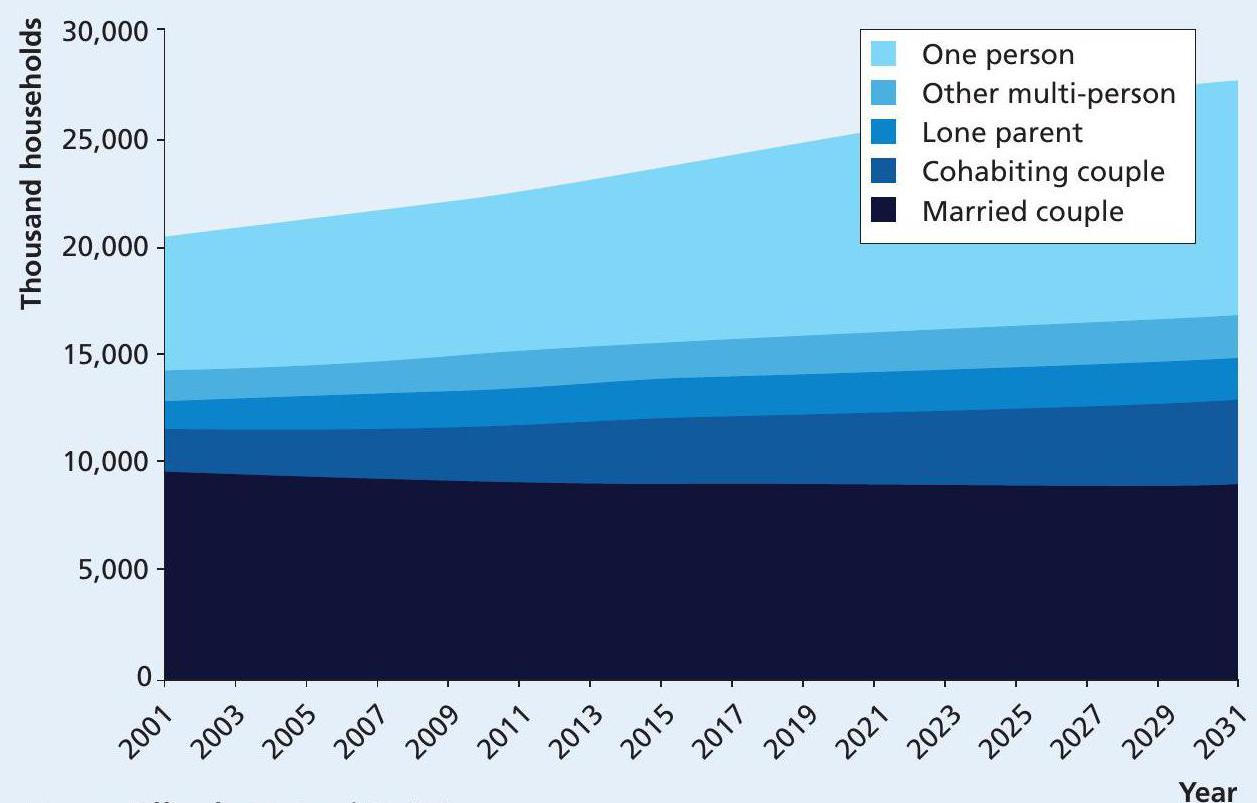
One of the most striking recent developments in household structure is the projected rise and rise of single-person households. A report in 2009 by the Department of Communities and Local Government predicted that the number of households in England will grow, on average, by 252,000 a year between 2006 and 2031 and that one-person households will account for two-thirds of that overall increase (Figure 1).
An ONS Statistical Bulletin on Family and Households published in January 2012 has been mapping some of these changes over the past decade. It shows that almost three out of ten households in the UK in 2011 contained just one person — some 7.7 million people (Figure 2). Those people who were the most likely to live alone over the past decade are now no longer the old but those in the 45–64 age range (Figure 3), coinciding with a fall in the percentage of people in this age group who are married (from 77% in 2001 to 70% in 2011) and a rise in the percentage who have never married or are divorced. All this suggests that we need to think much harder about the sociological implications for societies in which so many people are likely to choose to live alone.
Your organisation does not have access to this article.
Sign up today to give your students the edge they need to achieve their best grades with subject expertise
Subscribe




